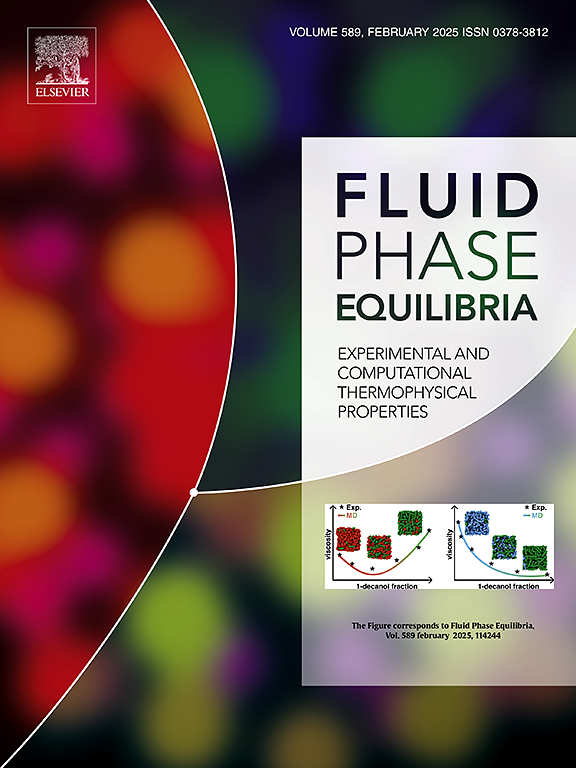A semi-theoretical phase equilibrium equation for methane hydrate accounting for physicochemical properties and inter-grain arrangement of sediment
IF 2.7
3区 工程技术
Q3 CHEMISTRY, PHYSICAL
引用次数: 0
Abstract
The phase equilibrium equation for methane hydrate (MH) is influenced by the pore size within soils and the physicochemical properties of the soil minerals. Therefore, we presented a semi-theoretical phase equilibrium equation for MH in sediments that accounts for both pore size and physicochemical characteristics. First, we examined the relationship between pore size and sample porosity, interparticle angles, and the shape of interparticle cementation. Subsequently, we characterized the relationships among pore size, water content, and the new phase equilibrium equation, considering capillary pressure and bound water content. Finally, we validated the phase equilibrium equation with experimental data available in the literature. Our findings indicate that low water content inhibits hydrate formation, while greater pore sizes enhance MH formation. Additionally, a simultaneous reduction in both pore size and water content significantly inhibits hydrate formation.
考虑沉积物理化性质和颗粒间排列的甲烷水合物半理论相平衡方程
甲烷水合物的相平衡方程受土壤孔隙大小和土壤矿物的理化性质的影响。因此,我们提出了考虑孔隙大小和物理化学特征的沉积物中MH的半理论相平衡方程。首先,我们研究了孔隙大小与样品孔隙度、颗粒间角和颗粒间胶结形状之间的关系。随后,我们在考虑毛管压力和束缚水含量的情况下,表征了孔径、含水量和新相平衡方程之间的关系。最后,我们用文献中的实验数据验证了相平衡方程。我们的研究结果表明,低含水量抑制水合物的形成,而大孔径则促进MH的形成。此外,孔隙大小和含水量的同时减小显著抑制了水合物的形成。
本文章由计算机程序翻译,如有差异,请以英文原文为准。
求助全文
约1分钟内获得全文
求助全文
来源期刊

Fluid Phase Equilibria
工程技术-工程:化工
CiteScore
5.30
自引率
15.40%
发文量
223
审稿时长
53 days
期刊介绍:
Fluid Phase Equilibria publishes high-quality papers dealing with experimental, theoretical, and applied research related to equilibrium and transport properties of fluids, solids, and interfaces. Subjects of interest include physical/phase and chemical equilibria; equilibrium and nonequilibrium thermophysical properties; fundamental thermodynamic relations; and stability. The systems central to the journal include pure substances and mixtures of organic and inorganic materials, including polymers, biochemicals, and surfactants with sufficient characterization of composition and purity for the results to be reproduced. Alloys are of interest only when thermodynamic studies are included, purely material studies will not be considered. In all cases, authors are expected to provide physical or chemical interpretations of the results.
Experimental research can include measurements under all conditions of temperature, pressure, and composition, including critical and supercritical. Measurements are to be associated with systems and conditions of fundamental or applied interest, and may not be only a collection of routine data, such as physical property or solubility measurements at limited pressures and temperatures close to ambient, or surfactant studies focussed strictly on micellisation or micelle structure. Papers reporting common data must be accompanied by new physical insights and/or contemporary or new theory or techniques.
 求助内容:
求助内容: 应助结果提醒方式:
应助结果提醒方式:


